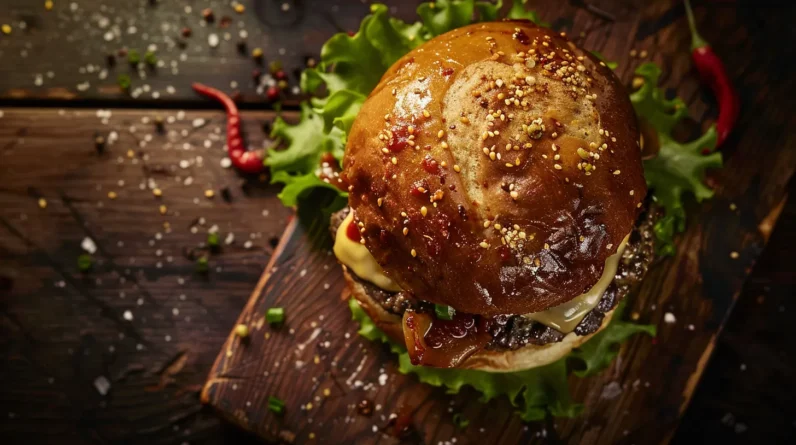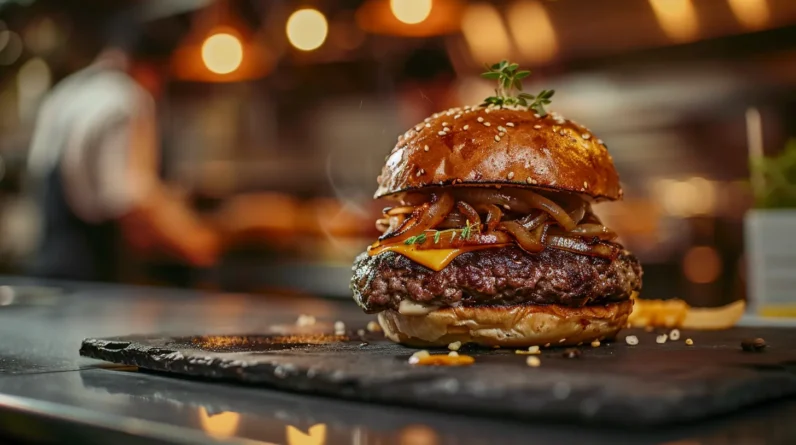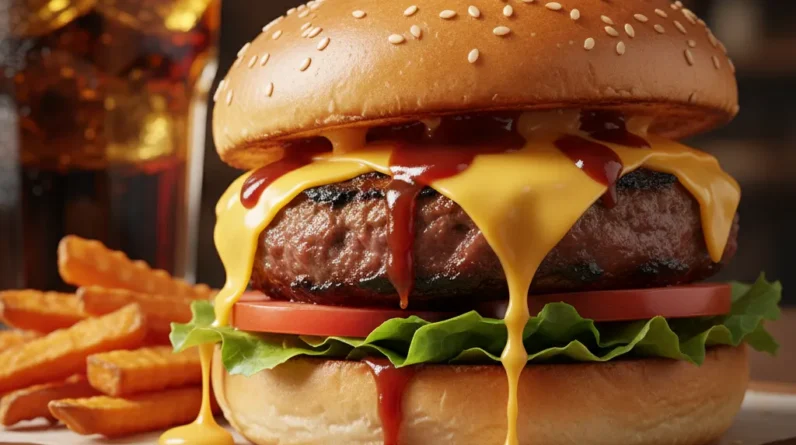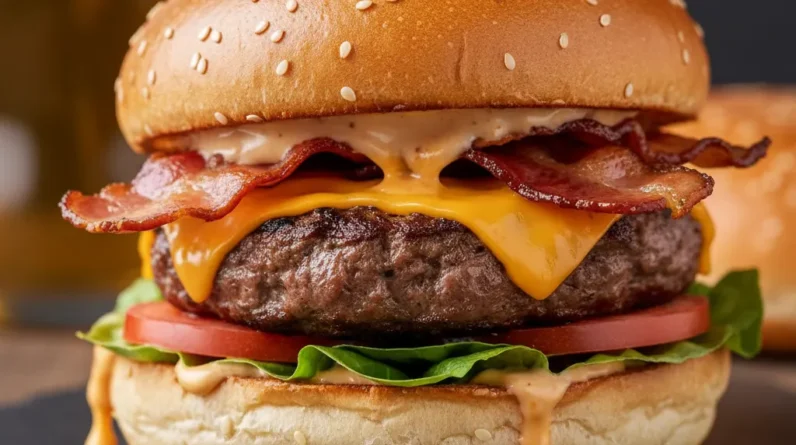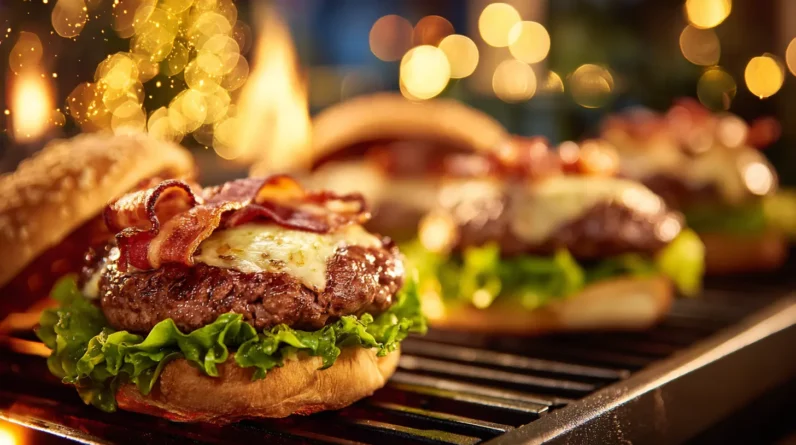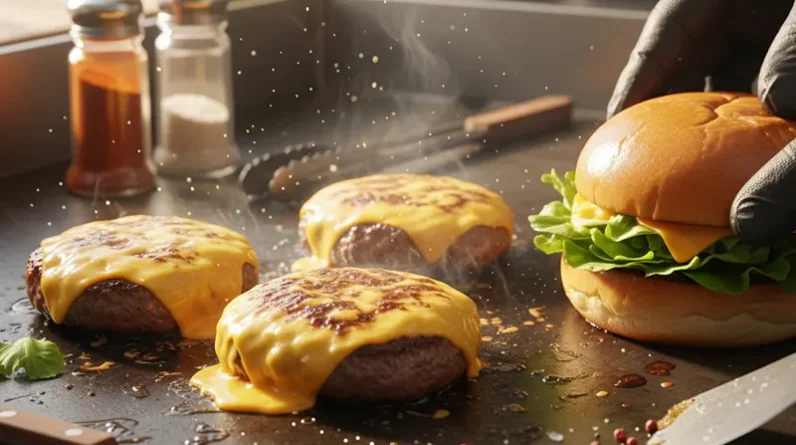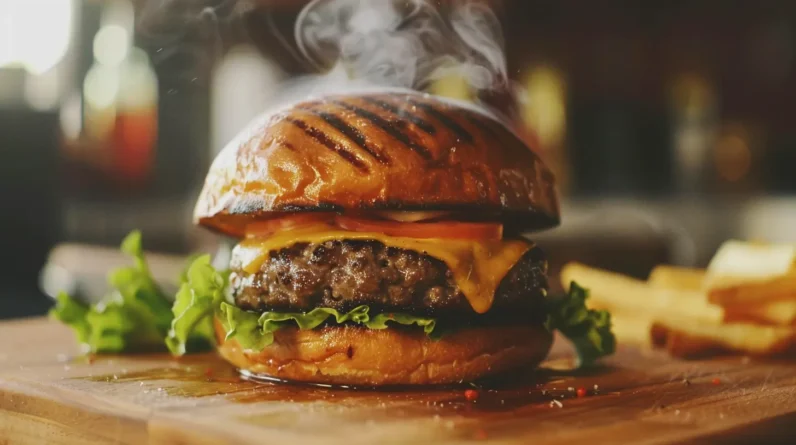
When we rest burgers after grilling, we’re not just being patient—we’re elevating our burger game. This 3-5 minute pause allows juices to redistribute, enhancing moisture and flavor throughout the patty. During this time, carryover cooking raises the internal temperature by 5-10°F, ensuring food safety without overcooking. The resting process relaxes proteins, reabsorbing juices and stabilizing temperature, which results in a more uniform texture from edge to center. We’ll also notice improved tenderness as muscle fibers relax, and a richer flavor profile as fat-soluble compounds disperse. Mastering this technique is key to revealing your burger’s full potential.
Understanding the Resting Process
Upon completing the grilling process, resting burgers is an essential step that greatly impacts the final quality of the meat. We must understand that resting allows for the redistribution of juices throughout the patty. During cooking, heat forces these juices towards the center of the burger. By allowing a rest period of 3-5 minutes, we enable these juices to redistribute evenly, resulting in a more uniformly moist and flavorful burger.
Furthermore, resting facilitates carryover cooking, where residual heat continues to cook the burger slightly. This process helps achieve the desired doneness without overcooking the exterior. It’s important to recognize that the internal temperature of the burger may rise by 5-10°F during this period. By factoring in this temperature increase, we can guarantee peak doneness and food safety standards are met.
Moisture Retention and Juiciness
During the resting period, moisture retention plays an essential role in preserving the burger’s juiciness. As the meat cools, the proteins begin to relax and reabsorb the juices that were forced towards the center during cooking. This redistribution of moisture guarantees a more even distribution throughout the patty.
We’ve found that resting allows the internal temperature to stabilize, reducing the pressure gradient that would otherwise cause juices to rush out when the burger is cut. The ideal resting time varies depending on thickness, but generally ranges from 3-5 minutes for standard patties. During this time, residual heat continues to cook the burger slightly, often raising the internal temperature by 5-10°F. This process, known as carryover cooking, contributes to the final texture and moisture content of the burger.
Texture Improvement Through Redistribution
The redistribution of moisture during the resting period doesn’t just enhance juiciness; it greatly improves the burger’s texture. As the burger rests, the proteins begin to relax, allowing the moisture to spread evenly throughout the patty. This process, known as equilibration, results in a more uniform texture from edge to center.
We’ve observed that rested burgers exhibit a more cohesive mouthfeel, with fewer dry or overcooked areas. The heat-driven contraction of muscle fibers during cooking is partially reversed, leading to a more tender bite. Additionally, the redistribution of fats throughout the meat matrix enhances the burger’s perceived richness and smoothness.
Flavor Enhancement After Grilling
Resting burgers doesn’t just improve texture; it greatly enhances flavor development. As the juices redistribute, they carry fat-soluble flavor compounds throughout the patty, resulting in a more complex taste profile. During the resting period, residual heat continues to break down proteins and fats, creating new flavor compounds through Maillard reactions and lipid oxidation.
We’ve found that a 3-5 minute rest allows for ideal flavor enhancement without significant temperature loss. This interval permits the continued development of umami compounds, particularly glutamates, which intensify the meaty flavor. Additionally, the resting period allows for the slight cooling of volatile aromas, making them less likely to evaporate immediately upon cutting into the burger. This results in a more pronounced and lingering flavor experience when we bite into the patty.
Proper Resting Techniques
To nail proper resting techniques for burgers, we’ve honed in on a few key factors. First, we recommend using a wire rack to elevate the patties, allowing air circulation and preventing steam buildup on the bottom. Place the rack on a baking sheet to catch any juices. The ideal resting time is 3-5 minutes for standard burgers, and 5-7 minutes for thicker patties. Maintain a warm environment by tenting loosely with aluminum foil, but avoid tight wrapping to prevent moisture accumulation.
For consistent results, use an instant-read thermometer to monitor the internal temperature during resting. We’ve found that a 5°F increase is typical, so remove burgers from heat when they’re 5°F below your desired doneness. Finally, resist the urge to press or cut into the burgers during resting to preserve maximum juiciness.
Conclusion
We’ve grilled our way to burger perfection, but the journey’s not over. Like a well-oiled machine, our patties need a moment to recalibrate. As we’ve discovered, resting is the unsung hero of burger alchemy. It’s the critical final step that transforms good into great, allowing juices to redistribute, flavors to meld, and textures to stabilize. By mastering this technique, we’re not just cooking burgers; we’re crafting culinary masterpieces that’ll have taste buds singing.


